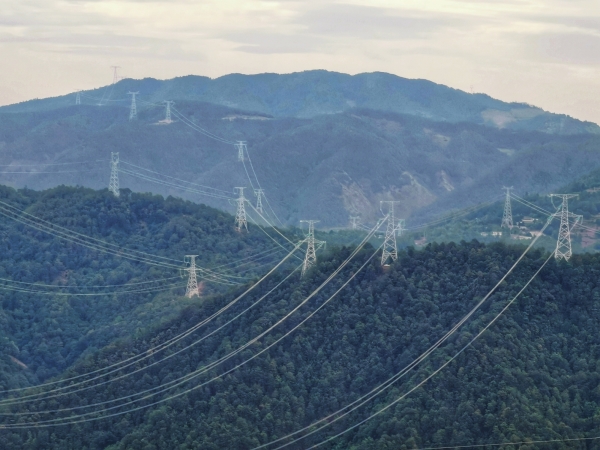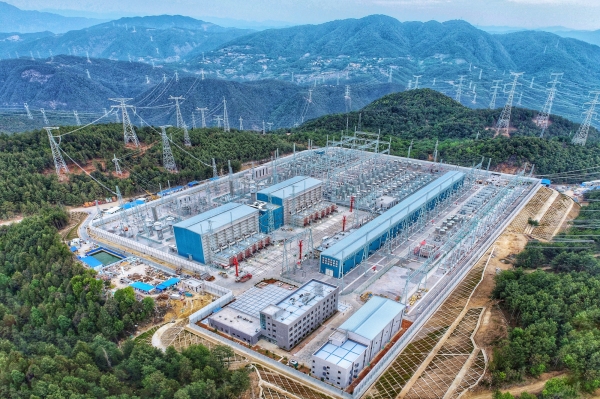The Yunnan-Guizhou interconnection channel project, the world's first ±500 kV three-terminal direct current (DC) project, was completed on June 11, 19 days ahead of schedule.
The operation marked the completion of the interconnection and cooperation power complex of Southwest China's Yunnan and Guizhou provinces.
The project is expected to transmit about 6 billion kWh of clean energy power from Yunnan to the Guangdong-Hong Kong-Macao Greater Bay Area (GBA) every year.
The power equals that produced by about 1.8 million tons of standard coal, and a reduction of carbon dioxide emissions of about 4.8 million tons. The project plays a big role in winning the battle against air pollution, promoting consumption of hydropower in Yunnan and boosting construction of the GBA.
A major national power transmission and transformation undertaking, the project was contracted by China Southern Power Grid (CSG) in response to China's western development drive and new infrastructure construction.
It is also an iconic project to support energy transformation and high-quality development.
With an investment of 3.83 billion yuan ($540.36 million), the project included construction of a converter station in Luquan county in Yunnan and a 389-kilometer DC export power line between the new station and the Gaopo converter station of the Gaopo-Zhaoqing DC power line.
Renovations of converter stations in Gaopo of Guizhou and Zhaoqing in South China's Guangdong province were also included.
A three-terminal DC network between converter stations in Luquan, Gaopo and Zhaoqing was then completed, with a rated capacity of 3 million kW.
According to the company, the project has a more flexible power transmission method and is a model in exporting large-scale power, connecting receiving terminals into power separate distribution networks, optimizing power grid structure and improving the security and stability of a receiving terminal grid.
It's worth mentioning that the project was built in regions with high altitude, ice and karst landforms, during which several techniques in multi-terminal DC flexible power transmission and high-altitude DC equipment installation were developed.
The three-terminal DC control protection system and DC high-speed switch used during the engineering were all made domestically, which was a milestone for China to master the key to multi-terminal DC technology.
Construction of the project began in July 2019 and CSG had been devoted to speeding up the project while ensuring pandemic prevention and control, and boosting economic and social development since February this year.
The company has made full use of a special platform to optimize the allocation of resources to resume power supply from Guizhou to Guangdong, which relieved power shortages because of the resumption of production and continuous high-temperature days.
Moreover, the project contributed to employment.
More than 4,300 builders were needed during the construction and 97 local residents were recruited to participate in renovation of the Gaopo converter station, which solved the difficulty when local migrant workers were not able to go out of the region for work due to the pandemic.
The construction also drove many enterprises along the upstream and downstream of the power industrial chain related to raw material, electric devices, electronic components, engineering and inspections to resume work despite the pandemic.

A view of a section of the Yunnan-Guizhou interconnection channel project [Photo/sasac.gov.cn]

The Luquan converter station in Yunnan, at 2,530 meters above sea level, is the highest 500 kV transformer substation built by CSG. [Photo/sasac.gov.cn]
(Executive editor: Wang Ruoting)